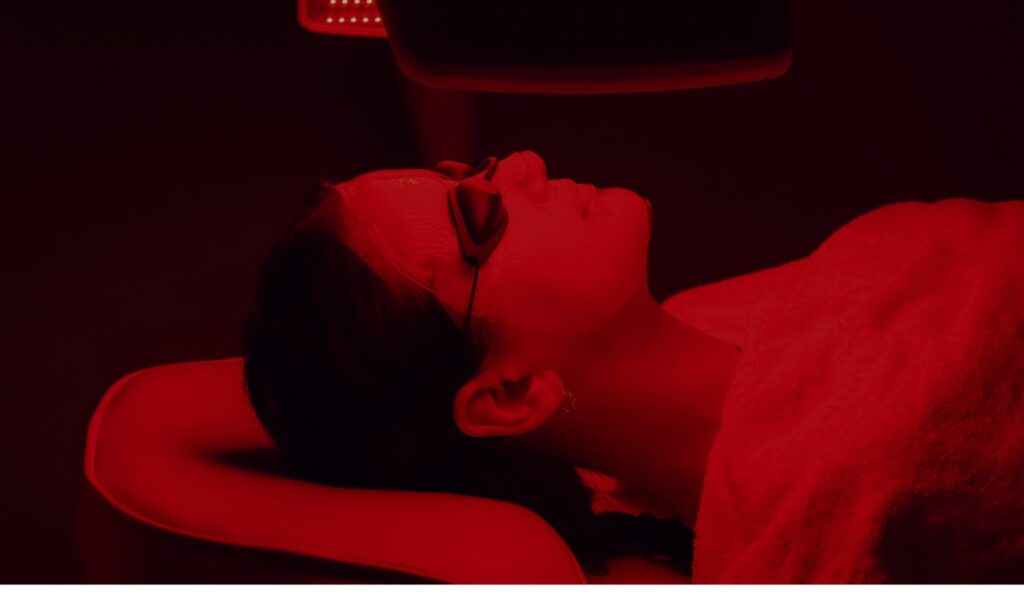Flexibility is an important part of a healthy body and movement. It makes everyday life easier, reduces injury risk and even helps posture. Whether you are an athlete, a desk worker, or just someone looking to keep your strength and mobility as you get older, staying flexible will help your body keep up and feel strong.
But what if enhancing your flexibility was as easy as standing in front of a light for a few minutes? That is where red light therapy comes in.
No pills. No pain. Just light.
In recent years, this noninvasive and science-based treatment has become increasingly popular for enhancing flexibility and mobility. In this blog, we will discuss how red light therapy improves flexibility.
Table of Contents
ToggleWhat is Red Light Therapy?

Red light therapy is a treatment that applies targeted wavelengths of light to help heal and enhance the functioning of your body. It may seem like science fiction, but it is simple and proven. Your body’s cells absorb the red and near-infrared light, which helps charge them up. It is kind of like charging your phone—except you are recharging your body. The therapy accelerates cellular processes, which can lead to better recovery, less pain, and healthier tissues.
In practice, people sit or stand in front of a specialized device that produces this light. Some devices are aimed at targeting specific areas, while others are designed to treat larger sections of your body. It is painless, safe for regular use, and has almost no side effects, making it accessible to a wide range of people.
The Science Behind Red Light Therapy
Let us break it down simply. When red light penetrates your skin, it reaches cells called mitochondria. They are called the ”powerhouses” of the cell. The light stimulates these mitochondria and makes them produce more energy. This surplus energy enables cells to repair damage and operate more efficiently.
The light can also improve blood flow and reduce inflammation, both of which are important aspects of healing and muscle recovery. By targeting the body on a cellular level, red light therapy stimulates natural processes that help you move and feel better.
Common Uses of Red Light Therapy
There are several uses for red light therapy backed by research. For example, it is commonly used to rejuvenate skin, reduce wrinkles, and encourage collagen synthesis. It also has gained popularity as a pain reliever with many people using it for back pain, arthritis, and other chronic conditions. Additionally, it promotes muscle recovery, which is why athletes love it. While these benefits are impressive, its ability to improve flexibility takes it to a whole new level.
How Red Light Therapy Improves Flexibility
Boosting Muscle Recovery
Reducing Inflammation and Pain
Enhancing Blood Flow and Tissue Health
Who Can Benefit from Red Light Therapy?
Everyone can benefit from increased flexibility, but certain individuals will benefit the most from red light therapy.
Athletes and Fitness Enthusiasts
For athletes, peak performance includes flexibility. Red light therapy helps muscles recover faster and reduces fatigue, which enables you to push your limits. Injuries typically stiffen up your muscles and limit your movement, but the therapy fosters a better healing process, so you can ultimately return to your full range of motion. Making it a part of your routine can give you a significant boost in performance.
People with Chronic Pain or Stiffness
People with conditions like arthritis or fibromyalgia know how difficult it can be to move freely. It makes even minute tasks feel severely exhausting, with joint pain and stiffness. Red light therapy for flexibility helps in giving relief by decreasing pain and enhancing mobility. Improving tissue health gives people with these conditions more freedom to live without limits.
Ageing Population
Flexibility tends to decline as we get older. Consequently, they become more prone to falling, getting injured, or losing their independence altogether. Red light therapy maintains the health of joints, muscles, and connective tissues, keeping older adults active longer. Flexibility allows for better mobility and therefore lets you continue to enjoy the things you love.
How to Use Red Light Therapy Safely and Effectively
Getting started with red light therapy is simple, but following these tips will help you get the most out of your sessions.
Recommended Devices and Settings
Not all units are created equal, so selecting one that offers the appropriate wavelengths is essential. The most effective devices used red light (600-700 nm, (nanometres)) and near-infrared light (800-1000 nm). These go deeper into the skin to stimulate healing processes. Choose ones that provide good power output so that this light reaches the appropriate level of your tissues.
Tips for Maximising Results
Consistency is what gets you results. Use red light therapy for 10 to 20 min a day on areas you want to improve flexibility. Adding light stretching or an appropriate warm-up with therapy will compound the results. Consider it as a complementary component of a more comprehensive regimen for improved movement.
The Bottom Line
Red light therapy is a convenient, science-backed method for enhancing flexibility. It supports muscle recovery, reduces pain and inflammation, increases blood flow, and lets your body feel looser and ready to move. Whether you are looking to improve performance as an athlete, living with chronic stiffness, or just want to continue moving smoothly as you age, red light therapy can be beneficial. Safe, simple to use, and beneficial in so many ways — not just flexibility. If you are looking to feel more agile and capable, this therapy may be exactly what you need. Why not give it a try and see how it transforms your range of motion?
